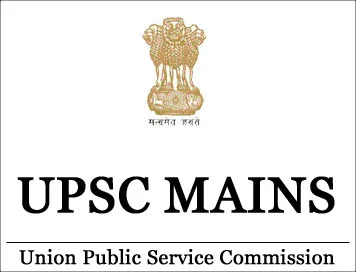(Download) UPSC IAS Mains General Studies (Paper - III) Exam Question Paper - 2013
Exam Name: UPSC IAS Mains Exam
Year: 2013
Subject: Paper-IV: General Studies -III (Technology, Economic Development, Bio-diversity, Environment, Security and Disaster Management)
Time Allowed: 3 Hours
File Type: PDF
Total Marks : 10×25 = 250
Instructions: Answer questions in not more than the words limit specified for each in the parenthesis. Contents of the answers are more important than its length.
Q1. With a consideration towards the strategy of inclusive growth, the new Companies Bill, 2013 has indirectly made CSR a mandatory obligation. Discuss the challenges expected in its implementation in right earnest. Also discuss other provisions in the Bill and their implications.
Q2. What were the reasons for the introduction of Fiscal Responsibility and Budget Management (FRBM) Act, 2003? Discuss critically its salient features and their effectiveness.
Q3. What is the meaning of the term ‘tax expenditure’? Taking housing sector as an example, discuss how it influences the budgetary policies of the government.
Q4. Food Security Bill is expected to eliminate hunger and malnutrition in India. Critically discuss various apprehensions in its effective implementation along with the concerns it has generated in WTO.
Q5. What are the different types of agriculture subsidies given to farmers at the national and at state levels? Critically analyse the agricultural subsidy regime with reference to the distortions created by it.
Q6. India needs to strengthen measures to promote the pink revolution in food industry for ensuring better nutrition and health. Critically elucidate the statement.
Q7. Examine the impact of liberalization on companies owned by Indians. Are they competing with the MNCs satisfactorily? Discuss.
Q8. Establish relationship between land reforms, agricultural productivity and elimination of poverty in the Indian economy. Discuss the difficulties in designing and implementation of agriculture – friendly land reforms in India.
Q9.
-
Discuss the impact of FDI entry into Multi-trade retail sector on supply chain management in commodity trade pattern of the economy.
-
Though India allowed Foreign Direct Investment (FDI) in what is called multibrand retail through the joint venture route in September 2012, the FDI, even after a year, has not picked up. Discuss the reasons.
Q10. Discuss the rationale for introducing the Goods and Services Tax (GST) in India. Bring out critically the reasons for the delay in roll out for its regime.
Q11. Write a note on India’s green energy corridor to alleviate the problem of conventional energy.
Q12. Adoption of PPP model for infrastructure development of the country has not been free of criticism. Critically discuss the pros and cons of the model.
Q13. Bringing out the circumstances in 2005 which forced amendment to the section 3(d) in Indian Patent Law, 1970, discuss how it has been utilized by the Supreme Court in its judgement in rejecting Novartis’ patent application for ‘Glivec’. Discuss briefly the pros and cons of the decision.
Q14. What do you understand by Fixed Dose drug Combinations (FDCs)? Discuss their merits and demerits.
Q15. What do you understand by Umpire Decision Review System in cricket? Discuss its various components. Explain how silicone tape on the edge of a bat may fool the system?
Q16.
-
What is a digital signature? What does its authentication mean? Give various salient built-in features of a digital signature.
-
How does the 3D printing technology work? List out the advantages and disadvantages of the technology.
Q17.
-
What is an FRP composite material? How are they manufactured? Discuss their application in aviation and automobile industries.
-
What do you understand by Run-of-river hydroelectricity project? How is it different from any other hydroelectricity project?
Q18. How important are vulnerability and risk assessment for pre-disaster management? As an administrator, what are key areas that you would focus on in a Disaster Management System?
Q19. What are the consequences of Illegal mining? Discuss the Ministry of Environment and Forest’s concept of GO AND NO GO zones for coal mining sector.
Q20. Enumerate the National Water Policy of India. Taking river Ganges as an example, discuss the strategies which may be adopted for river water pollution control and management. What are the legal provisions of management and handling of hazardous wastes in India?
Q21. Money laundering poses a serious security threat to a country’s economic sovereignty. What is its significance for India and what steps are required to be taken to control this menace?
Q22. What are social networking sites and what security implications do these sites present?
Q23. Cyber warfare is considered by some defense analysts to be a larger threat than even Al Qaeda or terrorism. What do you understand by Cyber warfare? Outline the cyber threats which India is vulnerable to and bring out the state of the country’s preparedness to deal with the same.
Q24. Article 244 of the Indian Constitution relates to administration of schedules area and tribal areas. Analyse the impact of non-implementation of the provisions of the Fifth schedule on the growth of Left Wing extremism.
Q25. How far are India’s internal security challenges linked with border management particularly in view of the long porous borders with most countries of South Asia and Myanmar?
Click Here to Download Full Paper
हिंदी माध्यम में यूपीएससी आईएएस (मुख्य परीक्षा) के 5 वर्षों के प्रश्न पत्र डाउनलोड करने के लिए यहाँ क्लिक करें
<< Go Back to Main Page
Courtesy: UPSC







